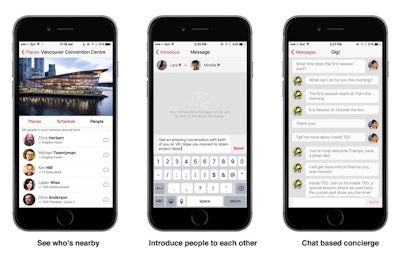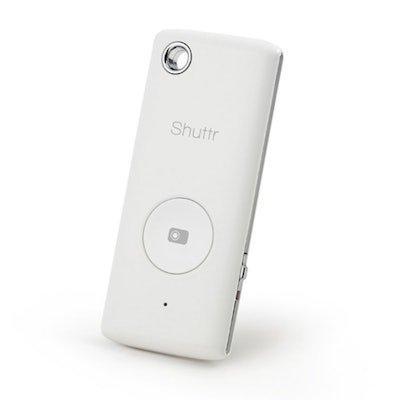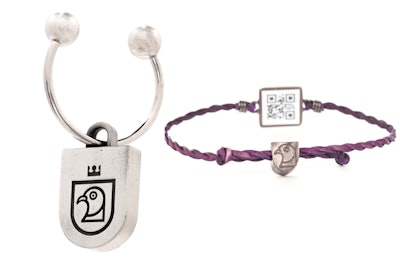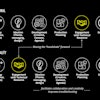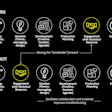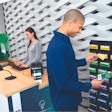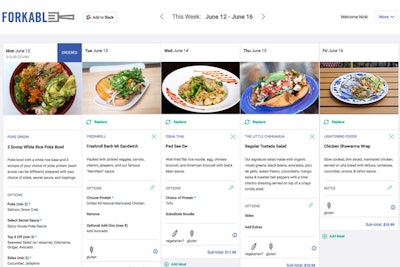
Forkable is a new option to provide individualized lunches for in-office meetings and events. Attendees input their preferences into the online platform, for example to indicate if they are vegetarian or prefer low-calorie meals. The week before the scheduled delivery, Forkable sends a message to each attendee with a suggested lunch from a nearby restaurant, based on the budget determined by the planner. The attendee can accept it or choose from more than a dozen other options. The day of the event, Forkable delivers the lunches labeled with the names of each attendee. Users are asked to rate their lunches so the system becomes “smarter” over time about individual preferences. There’s no contract or commitment, but Forkable does require a minimum of four orders per delivery. The service is available in the San Francisco area, Silicon Valley, New York, Los Angeles, Boston, Chicago, San Diego, Seattle, Washington, and Austin, Texas, with plans for future expansion in the United States and abroad.
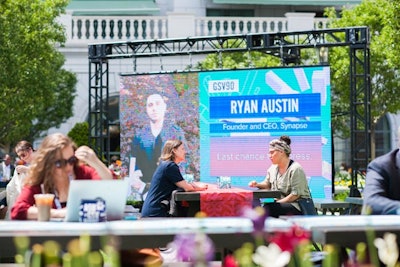


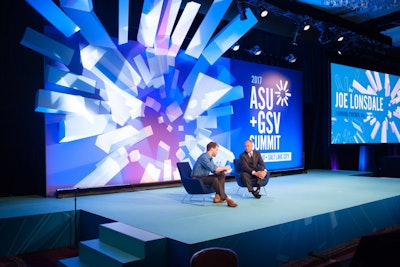
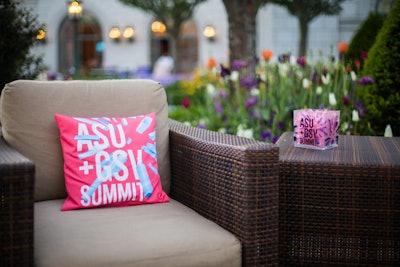


Surkus is an app to help brands, planners, and venues find the right people to attend their events, whether for product launches, brand activations, or red carpet parties. The concept is known as “crowdcasting,” and Surkus chief creative officer Jin Yu says the hope is to make the app the “Uber of curating your exact crowd.” Event hosts use the system to indicate the number and type of guests they are looking for based on interests, demographics, or social media reach. Those interested in attending events create a profile by linking their Facebook account. The system analyzes that person’s likes, friends, interactions, and hashtags and sends them notifications of upcoming events based on that data. Guests are paid a fee to attend, ranging from $5 for Playboy's recent high-profile Super Bowl party to more than $100 for less popular events. The app’s geofencing system automatically checks guests in and out of the event, which allows organizers to see if they stayed the minimum amount to receive payment. In addition to requiring guests to remain on site for a set time, hosts can also require mentions on social media, for example using a hashtag or posting a specific image. Surkus pays the guests via PayPal within 30 minutes of the completion of the event, and then a final bill is sent to the event host. After the event, Surkus sends the organizer a report with pictures of those who attended, their average time on site, and their combined social media reach. Surkus is available for iOS and Android.

SummitSync is a new iOS and Android app focused on networking. Users log in with their LinkedIn account, select the conferences they will attend, and then anonymously swipe right (interested) or left (not interested) when profiles of other attendees appear. When a mutual connection is made, the two users can message each other in the app to schedule a meeting. Planners can configure the app to ensure that only registered attendees can use the system. They can also sell ads in the app and keep the revenue. SummitSync integrates with email, calendar tools, and customer relationship management systems. In the next few months, an update will allow organizers to add event agendas and floor plans to the app.
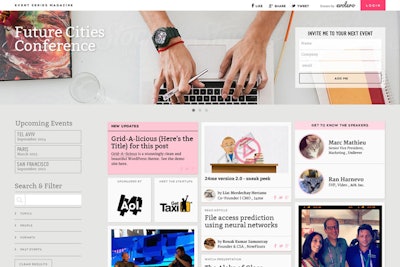
Evolero is an event website and management system that launched in January and is focused on creating an engaged community of attendees before, during, and after an event. The system invites attendees, speakers, and sponsors to link to their social networks and content they have created in their personal profiles. In addition to links for registration, programs, speakers, and sponsors, an Evolero site also includes a Pinterest-like display of relevant tweets, blog posts, and other content connected to the event. The content continues to update after the physical event ends so planners can maintain communication with attendees leading up to the next event.
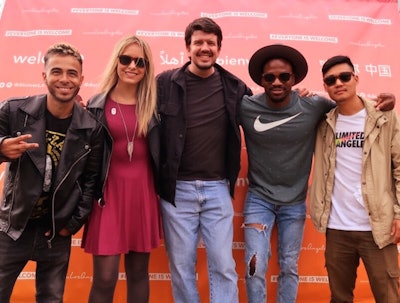

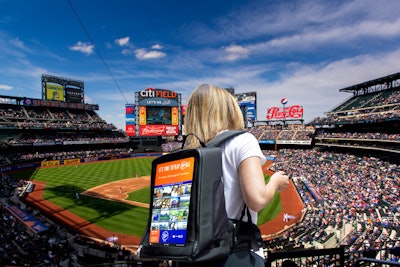
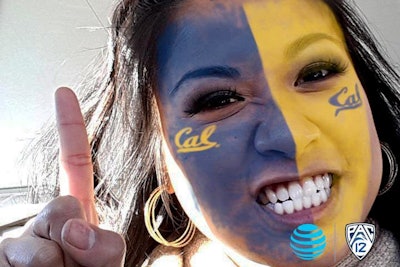
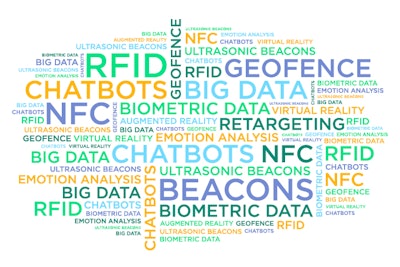
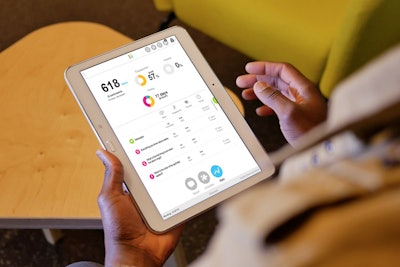
Klaxoon provides a variety of tools to facilitate information-sharing and collaboration at events. Planners can use the system to launch surveys, ask questions, create games, and prompt brainstorming. The system provides real-time results, so planners can track if attendees need clarification on content. The company is based in France, and expanded to the United States in June.
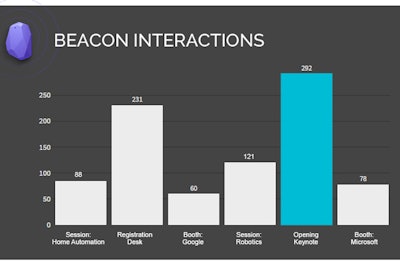
Beep is a beacon-enabled mobile app and attendee analytics platform. The system uses Bluetooth low-energy beacons to track attendee movement and dwell time, for example as they visit an exhibitor booth or attend a keynote session. Beep can also be used to send your guests location-based alerts and content, such as coupons, case studies, and website URLs, and can be set to trigger this content when they are anywhere from five to 230 feet from a beacon. Planners can access their event data in real-time from a Web-based dashboard.

Photo Butler is a new, free photo-sharing app for events. Hosts create a private album in the app and then invite guests to view and contribute their images. Those that choose to participate have all of their photos automatically added to the stream, without the need to text, upload, or email. The app’s algorithm pulls the best photos together into a highlight album.
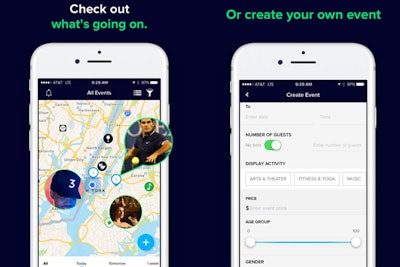
Asembl is a new, free event discovery and promotion app. Planners create their event in the app, tag it with descriptive attributes (such as art and theater, fitness, music, etc.) and indicate the cost to attend and the target age group and gender. Users can then filter events based on attributes as well as by what their friends are attending. Events are displayed on a map so users can also search for events within a certain distance.

Ivvy is an event management system for venues and meeting planners. Based in Australia, the company has thousands of users in 13 countries, and this summer launched in North America. The system provides tools for planners to create custom websites, manage registration, coordinate hotel and airline bookings, coordinate speakers and sponsors, accept payments, and more. The venue capabilities allow planners to search, compare, and book event space, catering, and group accommodations by reviewing real-time availability, rates, and inventory. The venue component is available now in North America, and the planning tools will be available in the near future.
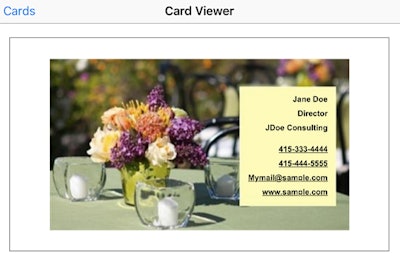
MoveShake is an app that allows users to design, create, share, and store virtual business cards. The cards are interactive, so clicking on the phone number in the image launches the phone’s dialer and clicking on the email launches the phone’s email client. Contacts be exported to a phone’s contacts and synced to the cloud or other applications. At events, presenters can give attendees their MoveShake ID so they can enter it in the app to immediately get their digital business card. Planners can also use the preload the app with cards from their sponsors, so those are immediately available to all attendees. And the app can be used to create digital badges to manage check-in.
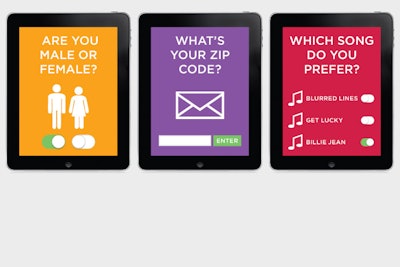

In May, Linkin Park played a free show on the backlot stage at Jimmy Kimmel Live in Los Angeles. The show was free and not ticketed, but the band wanted a way to connect with those who attended after the performance. To do that, it worked with Ampsy, which provides hyper-local social content aggregation, visualization, and analytics. Ampsy used social geofencing to discover posts on social media from people at the concert so the band could thank fans directly and offer them merchandise and other perks.



A giant LED wall responded to guests’ movements and the music.
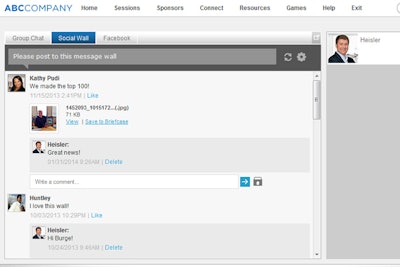

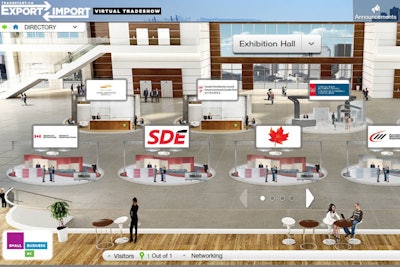
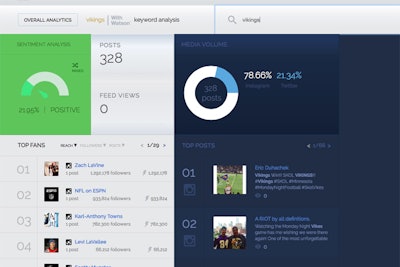

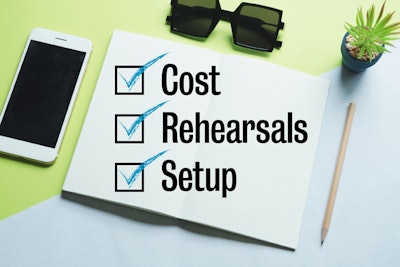
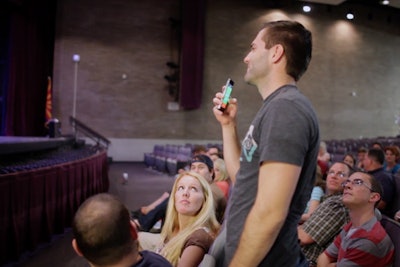
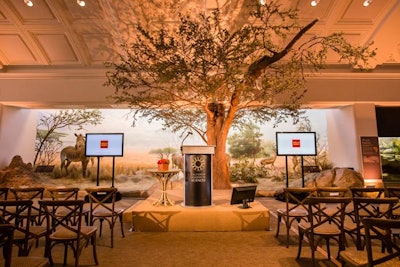

The festival’s opening ceremony took place March 25 at the Warner Theatre. Placed on seats in the theater were LED bracelets sponsored by the Japan National Tourism Organization. The bracelets were set to synchronize with parts of the show—as music played, the bracelets lit up in unison. The ceremony was produced by the festival along with event planning company the Webster Group.
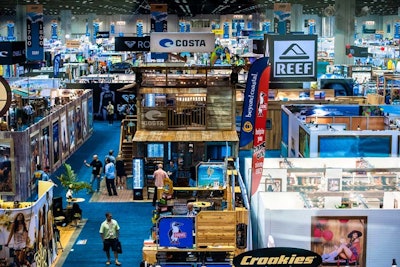
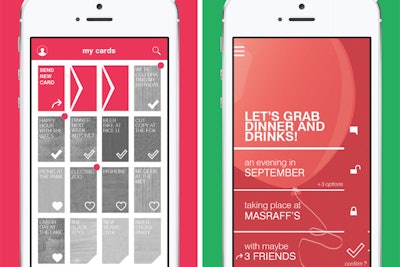
Fête launched its free iOS and Android apps in September. The foundation of the app is what it calls “invitation cards.” Hosts create the card, which can include event details like time and location, or it can be used to initiate a group chat to decide where and when to hold the event. The card can be sent to anyone in the host’s contact list. Guests don’t need to have the app to participate in the chat or respond to an invitation; instead they can do it via text.
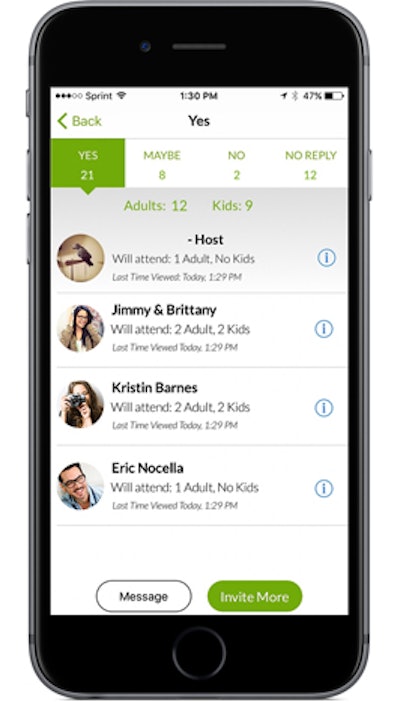
In December, Evite launched a comprehensive update to its iOS app. Event organizers can use the free app to choose from thousands of invitations organized by category and keyword. Hosts customize time, title, location, and host information and can also personalize invitations with photos from their camera roll. They can create the guest list from their phone’s contacts or their Evite address book. The dashboard offers real-time notifications of R.S.V.P.s, the ability to message guests about any changes, and the option to track adults and kids separately. Guests receive the invitation via email and can respond, comment to the group, or ask the host a question. Attendees can also share photos to the event’s activity feed. Evite’s Android app is expected later this year.
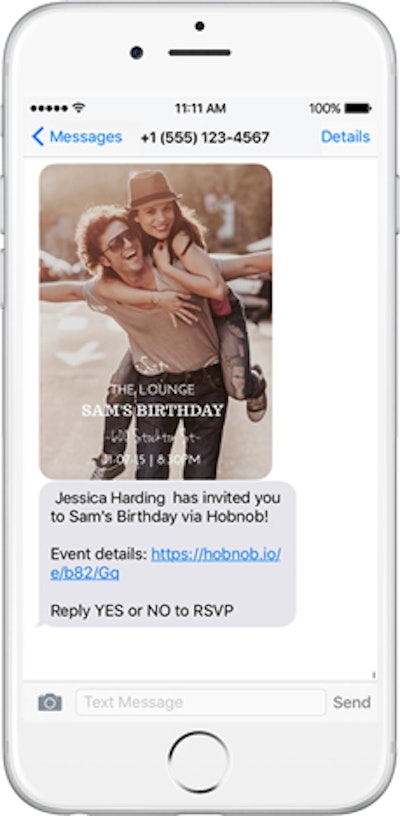
Hobnob is an iOS app that launched in March 2015. The app asks hosts to confirm their mobile number, but it does not require them to create an account or provide an email address. Hosts add the details of their event, including name, location, date, and time, and then select an invite template or upload their own design. After selecting recipients from their phone’s address book, the invitation is sent to those people as a text message with a photo of the invitation (it can also be shared via email and social media). Guests don’t need the app to R.S.V.P.; they simply reply “yes” or “no” to the message. Clicking the link in the text takes guests to the event’s Web page, which includes driving directions and a calendar integration option. Plus, hosts can use the app to chat with guests and manage photos. An Android version is expected soon.
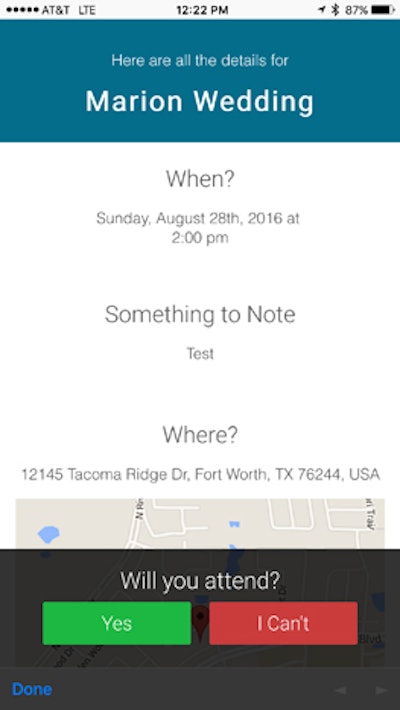
Steve Carlton launched Invitd in July 2014 after testing text-message invitations for his daughter’s birthday party. The rate of R.S.V.P.s was so much better than any other method he had used, such as email and Facebook, that he decided others might see value in a text-message-based invitation system. The free Invitd app, available for iOS and Android, has now been used to send nearly one million invitations. Hosts create a custom invitation by entering the name, location, and time of their event and selecting contacts from their address book to receive it. Recipients get a text message addressed to them by name with a link to the event details and R.S.V.P. options; they don’t need to have the app installed to view the invitation. In addition to responding “yes” or “no,” recipients can indicate how many people will attend, and they can add a reminder to their calendar. While the app can handle an unlimited number of invitees, Carlton says he will soon release an update that will add an easier interface for planners who want to use it for large meetings and events.
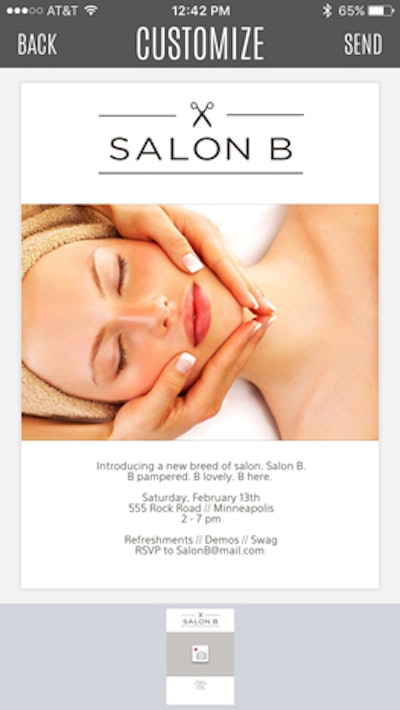
Red Stamp’s free iOS and Android apps can be used to send invitations via email or text or to post to Facebook, Instagram, or Twitter. Hosts choose from more than 2,000 designs that can be customized by changing the font and color scheme and by adding photos from their camera roll or taking photos in the app. A virtual mailbox helps hosts manage correspondence. The app also integrates with the device’s contact list so hosts can use it to order printed cards that ship directly to recipients. The app launched in 2011.
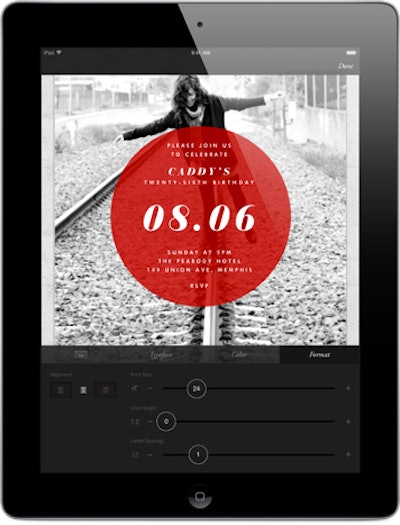
Paperless Post offers all the features of its original desktop-based invitations in a free iOS app that launched in 2012. Hosts can choose from thousands of designs, including cards from Kate Spade New York and Oscar de la Renta, and they can customize invitations with photos, fonts, and colors. Guests receive invitations via email or in the app, if they have it installed. The app can also serve as a communication portal, where the host and guests can post group and private messages and upload photos that can include comments and tags.

